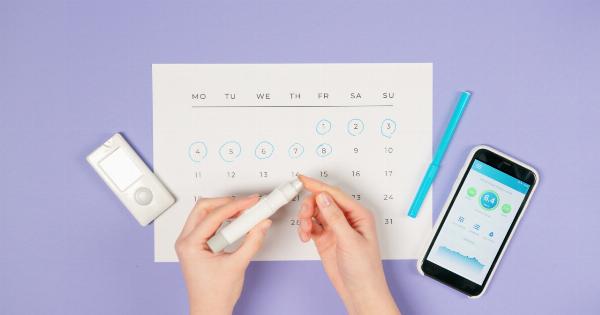Diabetes is a chronic disease that affects millions of people worldwide. It is a condition that affects the body’s ability to break down glucose, leading to high levels of sugar in the blood.
As a result, diabetic patients have to regularly monitor their blood sugar levels and take insulin shots to keep their glucose levels in check.
In recent years, researchers have been exploring new ways to monitor blood sugar levels without the need for regular blood tests. One of the most exciting developments has been the development of contact lenses that can monitor glucose levels in tears.
How Do Contact Lenses Monitor Blood Sugar Levels?
The lenses work by incorporating tiny sensors that detect glucose levels in tears. The sensors are embedded in the lens material and are connected to a small circuit board that sits on the edge of the lens.
The board is equipped with a tiny wireless transmitter that sends data to a smartphone or other device.
The lenses are designed to be worn for short periods, typically a day or two, before being replaced. Users simply insert the lens as they would a regular contact lens, and the device does the rest.
Because the sensors are in constant contact with the tear film, they can provide real-time data about changes in glucose levels.
What Are the Benefits of Using Contact Lenses to Monitor Blood Sugar Levels?
The primary benefit of using contact lenses to monitor glucose levels is that it eliminates the need for regular blood tests.
Diabetic patients often have to prick their fingers several times a day to check their glucose levels, which can be uncomfortable and time-consuming. With contact lenses, patients can get real-time data on their glucose levels without having to interrupt their daily routine.
Another benefit is that contact lenses can provide more accurate data than traditional blood tests. Blood glucose levels can fluctuate rapidly, and a finger-prick test may not capture these changes.
Contact lenses, on the other hand, are in constant contact with the tear film, which provides a more accurate reflection of glucose levels in the body.
Finally, contact lenses are far more discreet than traditional blood tests. Diabetic patients may be reluctant to check their glucose levels in public because it can be embarrassing or uncomfortable.
With contact lenses, patients can monitor their glucose levels without anyone knowing.
Potential Challenges with Using Contact Lenses to Monitor Blood Sugar Levels
While contact lenses offer significant benefits for diabetic patients, there are some potential challenges that need to be addressed.
One of the primary challenges is that the lenses are still in the testing phase and have not yet been approved for widespread use.
Another challenge is that the lenses require a significant amount of power to operate. The tiny sensors and wireless transmitter require a constant source of energy, which can be difficult to provide in such a small device.
Researchers are exploring using biofuel cells, which would use the glucose in tears to power the lenses, but this technology is still in its early stages.
Another challenge is that the lenses may be uncomfortable or irritate the eyes. Contact lenses can be uncomfortable to wear, especially if they are worn for long periods.
Researchers are exploring different materials and designs to minimize discomfort and improve wearability.
Conclusion
Contact lenses that monitor glucose levels represent a significant advancement in the field of diabetes management.
These devices have the potential to make life easier for diabetic patients by allowing them to monitor their glucose levels in real-time without the need for regular blood tests.
While there are some challenges that need to be addressed, the development of these lenses is an exciting development that could have a significant impact on the lives of millions of people.






























